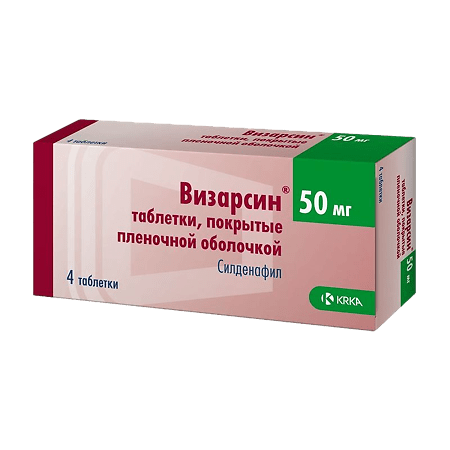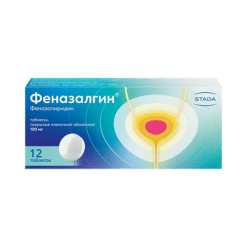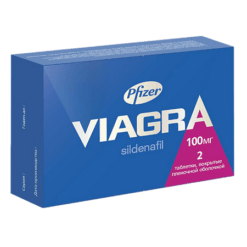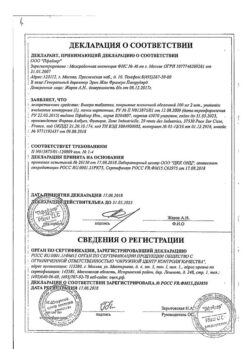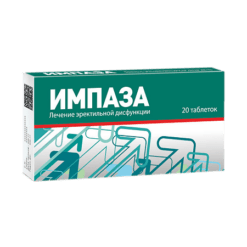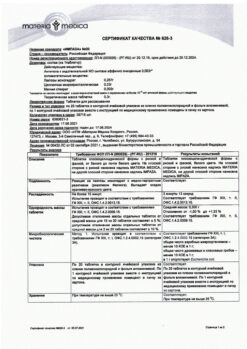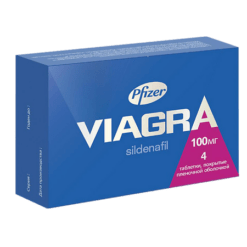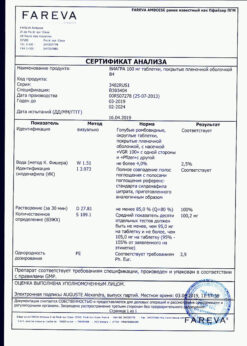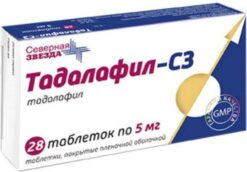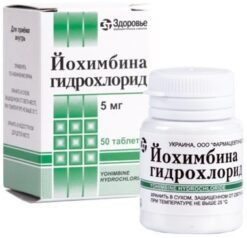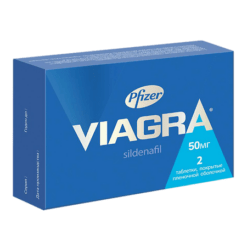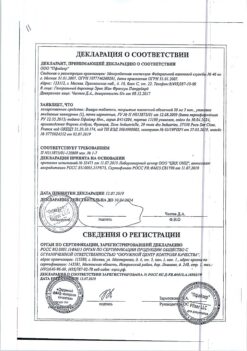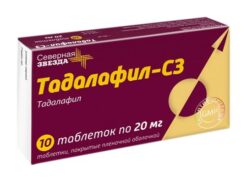No products in the cart.
Vizarsin, 50 mg 4 pc
€24.08 €20.07
Description
erectile dysfunction treatment – FDE5 inhibitor
Indications
Indications
The treatment of erectile dysfunction characterized by the inability to achieve or maintain an erection of the penis sufficient for satisfactory intercourse.
Sildenafil is only effective with sexual stimulation.
Active ingredient
Active ingredient
Composition
Composition
per tablet 25 mg/50 mg/100 mg:
Active ingredient:
Sildenafil citrate 35.12 mg (equivalent to sildenafil 25.00 mg)/Sildenafil citrate 70.24 mg (equivalent to sildenafil 50.00 mg)/Sildenafil citrate 140.48 mg (equivalent to sildenafil 100.00 mg)
Excipients: Microcrystalline cellulose (Avicel PH 101), calcium hydrophosphate, croscarmellose sodium, hypromellose, microcrystalline cellulose (Avicel PH 102), magnesium stearate
Film Coating
*Opadray II 31K58875 white
*Opadray II 31K58875 white is a mixture of hypromellose, lactose monohydrate, titanium dioxide, triacetin.
How to take, the dosage
How to take, the dosage
Orally.
The recommended dose for most adult patients is 50 mg approximately 1 hour before sexual activity. Depending on efficacy and tolerability, the dose may be increased to 100 mg or reduced to 25 mg. The maximum recommended dose is 100 mg. Maximum recommended frequency of use is 1 time per day.
Kidney function impairment
In mild to moderate renal failure (CK 30-80 ml/min), no dose adjustment is required; in severe renal failure (CK < 30 ml/min), the sildenafil dose should be reduced to 25 mg.
Hepatic dysfunction
Because sildenafil excretion is impaired in patients with liver damage (particularly in cirrhosis), the dose of Vizarsin® should be reduced to 25 mg.
Simultaneous use with other drugs
Simultaneous use with ritonavir is not recommended. In any case, the maximum dose of Vizarsin® should not exceed 25 mg and the frequency of use should be once every 48 hours (see section “Interaction with other medicinal products”).
In concomitant use with CYP3A4 isoenzyme inhibitors (erythromycin, saquinavir, ketoconazole, itraconazole), the starting dose of Vizarsin® should be 25 mg (see section “Interaction with other medicinal products”).
To minimize the risk of orthostatic hypotension in patients taking α-adrenoblockers, Vizarsin® should be started only after stable hemodynamics is achieved in these patients. It is also necessary to consider the expediency of reducing the initial dose of sildenafil (see sections “Cautions” and “Interaction with other medicinal products”).
Elderly patients
Dose adjustment of Visarsin® is not required.
Interaction
Interaction
Influence of other drugs on sildenafil pharmacokinetics
The metabolism of sildenafil occurs mainly under the action of CYP3A4 isoenzymes (main pathway) and CYP2C9, so inhibitors of these isoenzymes may decrease sildenafil clearance, and inducers, respectively, increase sildenafil clearance. There is a decrease in sildenafil clearance when concomitant use of CYP3A4 isoenzyme inhibitors (ketoconazole, erythromycin, cimetidine). Cimetidine (800 mg), a non-specific CYP3A4 isoenzyme inhibitor, when taken simultaneously with sildenafil (50 mg) increases sildenafil concentration in plasma by 56 %. Simultaneous use of sildenafil 100 mg simultaneously with erythromycin (500 mg / day, 2 times a day for 5 days), a moderate inhibitor of CYP3A4 isoenzyme, against the background of achieving a constant concentration of erythromycin in blood, leads to an increase in sildenafil AUC by 182 %. Simultaneous administration of sildenafil (100 mg once) and saquinavir (1200 mg/day 3 times a day), an HIV protease inhibitor and CYP3A4 isoenzyme inhibitor, against the background of achieving a constant concentration of saquinavir in blood Cmax of sildenafil was increased by 140 %, and AUC was increased by 210 %. Sildenafil has no effect on the pharmacokinetics of saquinavir. Stronger inhibitors of CYP3A4 isoenzyme, such as ketoconazole and itraconazole, can cause stronger changes in sildenafil pharmacokinetics.
Combined use of sildenafil (100 mg once) and ritonavir (500 mg twice daily), an HIV protease inhibitor and a strong cytochrome P inhibitor450, against the background of achieving a constant blood concentration of ritonavir leads to an increase in Cmax of sildenafil by 300% (4 times), and AUC by 1000% (11 times). After 24 hours, plasma concentration of sildenafil is about 200 ng/ml (after a single use of sildenafil – 5 ng/ml). This is consistent with the effect of ritonavir on a wide range of cytochrome P450 substrates. Sildenafil has no effect on the pharmacokinetics of ritonavir. Given these data, concomitant administration of ritonavir and sildenafil is not recommended. In any case, the maximum dose of sildenafil in any case should not exceed 25 mg for 48 hours.
If sildenafil is taken in recommended doses by patients receiving strong CYP3A4 isoenzyme inhibitors simultaneously, the Cmax of free sildenafil does not exceed 200 nM and the drug is well tolerated.
A single administration of an antacid (magnesium hydroxide/aluminum hydroxide) does not affect the bioavailability of sildenafil.
In studies involving healthy volunteers, concomitant use of an endothelin receptor antagonist, bosentan (a moderate inducer of the CYP3A4, CYP2C9 and possibly CYP2C19 isoenzymes) at equilibrium concentration (125 mg 2 times daily) and sildenafil at equilibrium concentration (80 mg 3 times daily) showed reduced AUC and Cmax of sildenafil by 62.6% and 52.4%, respectively. Administration of sildenafil increased the AUC and Cmax of bosentan by 49.8% and 42%, respectively. It is suggested that concomitant use of sildenafil with potent inducers of CYP3A4 isoenzyme, such as rifampicin, may lead to a greater decrease in plasma concentration of sildenafil.
CYP2C9 isoenzyme inhibitors (tolbutamide, warfarin), CYP2D6 isoenzyme inhibitors (selective serotonin reuptake inhibitors, tricyclic antidepressants), thiazide and thiazide-like diuretics, angiotensin converting enzyme (ACE) inhibitors and calcium antagonists, have no effect on sildenafil pharmacokinetics.
Asithromycin (500 mg/day for 3 days) has no effect on the AUC, Cmax, TCmax, elimination rate constant and T1/2 sildenafil or its major circulating metabolite.
Influence of sildenafil on other drugs
Sildenafil is a weak inhibitor of the CYP1A2, CYP2C9, CYP2C19, CYP2D6, CYP2E1 and CYP3A4 isoenzymes (IR50 > 150 μmol). When sildenafil is taken at the recommended doses, its Cmax is about 1 μmol, so it is unlikely that sildenafil can affect the clearance of substrates of these isoenzymes.
Sildenafil enhances the hypotensive effects of nitrates both with long-term use of the latter and when used for acute indications. Therefore, use of sildenafil concomitantly with nitrates or NO donators is contraindicated.
Riociguat
In preclinical studies, an additive effect was noted in the form of decreased systemic blood pressure when using FDE5 inhibitors in combination with riociguat. In clinical studies, it has been shown that riociguat enhances the hypotensive effects of FDE5 inhibitors. There was no evidence of a favorable clinical effect of the combination in the populations studied. Simultaneous use of riociguat and FDE5 inhibitors, including sildenafil, is contraindicated (see section “Contraindications”).
When the α-adrenoblocker doxazosin (4 mg and 8 mg) and sildenafil (25 mg, 50 mg and 100 mg) were taken concomitantly in patients with benign prostatic hyperplasia with stable hemodynamics, the mean additional decrease in BP/DPH at lying position was 7/7 mm Hg, 9/5 mmHg and 8/4 mmHg, respectively, and 6/6 mmHg, 11/4 mmHg, and 4/5 mmHg in the standing position, respectively. Rare cases of symptomatic orthostatic hypotension, manifested as dizziness (without syncope), have been reported in these patients. In some sensitive patients receiving α-adrenoblockers, concomitant use of sildenafil may lead to symptomatic arterial hypotension.
There are no indications of significant interaction with tolbutamide (250 mg) or warfarin (40 mg) which are metabolized by CYP2C9 isoenzyme.
Sildenafil (100 mg) has no effect on the pharmacokinetics of HIV protease inhibitors, saquinavir and ritonavir, which are substrates of CYP3A4 isoenzyme, when their blood levels are constant.
Simultaneous use of sildenafil at equilibrium (80 mg 3 times daily) increases the AUC and Cmax of bosentan (125 mg 2 times daily) by 49.8% and 42%, respectively.
Sildenafil (50 mg) does not cause an additional increase in bleeding time with acetylsalicylic acid (150 mg).
Sildenafil (50 mg) does not increase the hypotensive effects of alcohol in healthy volunteers at a maximum blood alcohol concentration of 0.08% (80 mg/dL) on average.
No evidence of interaction between sildenafil (100 mg) and amlodipine was found in patients with arterial hypertension.
The mean additional reduction of BP in the supine position is 8 mm Hg (BP) and 7 mm Hg (BP).
The use of sildenafil concomitantly with hypotensive agents does not cause additional side effects.
Special Instructions
Special Instructions
Anatomical deformity of the penis (angulation, cavernous fibrosis or Peyronie’s disease) (see “Special Precautions”), diseases predisposing to the development of priapism (sickle cell anemia, multiple myeloma, leukemia, thrombocythemia) (see “Special Precautions”).
Particular indications>, diseases accompanied with bleeding, acute gastric and duodenal ulcer disease, liver dysfunction, severe renal failure (CK less than 30 ml/min), patients with a history of an episode of anterior nonarteritic ischemic optic neuropathy (see section “Special indications”), concurrent use of α-adrenoblockers.
The drug Vizarsin® is not intended for use in children under 18 years of age according to the registered indication.
Kidney function impairment
In mild to moderate renal failure (CK 30-80 ml/min), no dose adjustment is required; in severe renal failure (CK < 30 ml/min), the sildenafil dose should be reduced to 25 mg.
Hepatic dysfunction
Because sildenafil excretion is impaired in patients with liver damage (particularly in cirrhosis), the dose of Vizarsin® should be reduced to 25 mg.
Elderly patients
Dose adjustment of Vizarsin® is not necessary.
To diagnose erectile dysfunction, determine its possible causes and choose an adequate treatment, a complete medical history should be taken and a thorough physical examination should be performed. Treatment of erectile dysfunction should be used with caution in patients with anatomic penile deformities (angulation, cavernous fibrosis, Peyronie’s disease) or in patients with risk factors for priapism (sickle cell anemia, multiple myeloma, leukemia) (see section “Caution”).
During post-marketing studies, the development of prolonged erections and priapism has been reported. If an erection persists for more than 4 hours, immediate medical attention should be sought. If priapism is not treated immediately, it may result in penile tissue damage and permanent loss of potency. Drugs intended to treat erectile dysfunction should not be used by men for whom sexual activity is undesirable.
Sexual activity is risky if you have heart disease, so your doctor should refer you for a cardiovascular exam before starting any treatment for erectile dysfunction. Sexual activity is undesirable in patients with heart failure, unstable angina, myocardial infarction or stroke within the last 6 months, life-threatening arrhythmias, arterial hypertension (BP > 170/100 mm Hg) or arterial hypotension (BP < 90/50 mm Hg). Sildenafil is contraindicated in these patients (see section “Contraindications”). Clinical studies show no difference in the incidence of myocardial infarction (1.1 per 100 people per year) or cardiovascular mortality rate (0.3 per 100 people per year) in patients receiving sildenafil compared to patients receiving placebo.
Cardiovascular complications
In the postmarketing use of sildenafil for the treatment of erectile dysfunction, adverse events such as severe cardiovascular complications (including. including myocardial infarction, unstable angina, sudden cardiac death, ventricular arrhythmia, hemorrhagic stroke, transient ischemic attack, hypertension, and hypotension) that were temporarily associated with sildenafil use. Most, but not all, of these patients had risk factors for cardiovascular complications. Many of these adverse events were observed shortly after sexual activity, and some were noted after sildenafil administration without subsequent sexual activity. It is not possible to establish a direct link between the reported adverse events and these or other factors.
Arterial hypotension
Sildenafil has a systemic vasodilatory effect resulting in a transient decrease in BP, which is not clinically significant and does not result in any sequelae in most patients. Nevertheless, before prescribing Vizarsin® the physician should carefully evaluate the risk of possible undesirable vasodilatory effects in patients with related diseases, especially against the background of sexual activity.
Increased susceptibility to vasodilators is seen in patients with left ventricular outflow tract obstruction (aortic stenosis, hypertrophic obstructive cardiomyopathy) as well as rare multiple systemic atrophy syndrome manifested by severe autonomic nervous system BP dysregulation.
Since concomitant use of sildenafil and α-adrenoblockers may cause symptomatic arterial hypotension in some sensitive patients, Vizarsin® should be used with caution in patients taking α-adrenoblockers (see “Interaction with Other Drugs” on page 66). section “Interaction with other medicinal products”). To minimize the risk of orthostatic hypotension in patients taking α-adrenoblockers, Vizarsin® should be started only after hemodynamic stabilization in these patients. It should also be considered whether it is reasonable to reduce the initial dose of Visarsin ® (see section “Dosage and administration”). The physician should inform patients on what actions should be taken in case symptoms of orthostatic hypotension occur.
visual disturbances
On rare occasions during post-registration use of all FDE5 inhibitors, including sildenafil, non-arteritic anterior ischemic optic neuropathy, a rare condition and cause of vision loss or reduction, was reported. Most of these patients had risk factors, such as a decreased ratio of excavation and optic disc diameters (“stagnant disc”), age over 50 years, diabetes mellitus, arterial hypertension, CHD, hyperlipidemia, and smoking. The observational study evaluated whether recent use of drugs in the class of FDE5 inhibitors was associated with the acute onset of NSAIDs. Results indicated an approximately twofold increased risk of NPINZN within 5 T1/2 after FDE5 inhibitor use. According to published literature, the annual incidence of NPINZN is 2.5-11.8 cases per 100,000 men aged â¥50 years in the general population. Patients should be advised to discontinue sildenafil therapy in the event of sudden vision loss and immediately consult a physician. Individuals who have already had a history of NSAIDs have an increased risk of a recurrence of NSAIDs. Therefore, the physician should discuss this risk with such patients and also discuss with them the potential chance of adverse effects of FDE5 inhibitors. FDE5 inhibitors, including sildenafil, should be used with caution in such patients and only in situations where the expected benefit exceeds the risk. Sildenafil is contraindicated in patients with episodes of NSAIDs with loss of vision in one eye (see section “Contraindications”).
A small number of patients with hereditary retinitis pigmentosa have genetically determined retinal phosphodiesterase dysfunction. There is no information about the safety of sildenafil use in patients with retinitis pigmentosa, so sildenafil should not be used in these patients (see section “Contraindications”).
Hearing impairment
Some post-marketing studies have reported cases of sudden hearing impairment or loss associated with all FDE5 inhibitors, including sildenafil. Most of these patients had risk factors for sudden deterioration or hearing loss. A causal relationship between the use of FDE5 inhibitors and sudden hearing impairment or hearing loss has not been established. In case of sudden hearing impairment or hearing loss during taking Vizarsin®, consult the doctor immediately.
bleeding
Sildenafil enhances the antiaggregant effect of sodium nitroprusside, a NO donor, on human platelets under in vitro conditions. There are no data on the safety of sildenafil administration in patients with a tendency to bleeding or exacerbation of peptic ulcer disease, therefore, the drug Vizarsin® should be used with caution in such patients (see section “Caution”). The incidence of nasal bleeding in patients with pulmonary hypertension associated with diffuse connective tissue disease was higher (sildenafil 12.9%, placebo 0%) than in patients with primary pulmonary hypertension (sildenafil 3.0%, placebo 2.4%). Patients who received sildenafil in combination with a vitamin K antagonist had a higher rate of nasal bleeding (8.8%) than patients who did not take a vitamin K antagonist (1.7%).
Simultaneous use with other agents for the treatment of erectile dysfunction
The safety and efficacy of Vizarsin® concomitantly with other FDE5 inhibitors or other pulmonary hypertension drugs containing sildenafil or other treatments for erectile dysfunction have not been studied, so such combinations are not recommended (see Section “Contraindications”).
Since taking sildenafil may cause dizziness, BP decrease, chromatopsia, blurred vision, etc. side effects, caution should be exercised when driving vehicles and engaging in other potentially dangerous activities that require increased concentration and rapid psychomotor reactions. The individual effect of Vizarsin® should also be carefully considered in the above situations, especially at the beginning of treatment and when changing the dosing regimen.
Synopsis
Synopsis
Tablets 25 mg:oval biconvex oval film-coated tablets, white or almost white with number 25 engraved on one side.
Tablets 50 mg: oval biconvex film-coated tablets, white or nearly white, with the number 50 engraved on one side.
Tablets 100 mg: oval biconvex film-coated white or nearly white tablets with the number 100 engraved on one side.
Contraindications
Contraindications
Hypersensitivity to sildenafil or any other component of the drug.
use in patients receiving nitric oxide donors, organic nitrates or nitrites in any form continuously or intermittently, because sildenafil increases the hypotensive effect of nitrates (see section “Interaction with other medicinal products”).
Simultaneous use of FDE5 inhibitors, including sildenafil, with guanylate cyclase stimulators, such as riociguat, is contraindicated because it may lead to symptomatic hypotension (see section “Interaction with other drugs”).
Safety and efficacy of Vizarsin® when used concomitantly with other drugs for the treatment of erectile dysfunction have not been studied, therefore such combinations are not recommended (see section “Special Precautions”).
Severe hepatic impairment (Child-Pugh class C).
Concurrent use of ritonavir.
Severe cardiovascular disease (severe heart failure, unstable angina pectoris, stroke or myocardial infarction within 6 months, life-threatening arrhythmias, arterial hypertension (BP > 170/100 mm Hg), or hypertension in the past 6 months). Hg) or arterial hypotension (BP < 90/50 mm Hg)) (see section “Special Precautions”).
Patients with episodes of non-arteritic anterior ischemic optic neuropathy with vision loss in one eye.
Hereditary retinitis pigmentosa (see section “Special Precautions”).
Lactose intolerance, lactase deficiency, glucose-galactose malabsorption syndrome.
According to the registered indication, Vizarsin® is not intended for use in children under 18 years of age.
Vizarsin® is not indicated for use in women.
Side effects
Side effects
The most common side effects were headache and “hot flashes.
Sildenafil side effects are usually mild to moderate and transient.
In fixed-dose studies, it has been shown that the incidence of some adverse events increases with increasing dose.
World Health Organization (WHO) recommended side effect frequency classification:
very frequently â¥1/10
often ⥠1/100 to < 1/10
infrequently from ⥠1/1000 to < 1/100
rarely from ⥠1/10000 to < 1/1000
very rarely from < 1/10000
frequency is unknown cannot be estimated from available data.
immune system disorders:
infrequent: hypersensitivity reactions (including skin rash), allergic reactions.
Visual disorders:
often: blurred vision, visual disturbances, cyanopsia;
infrequently: eye pain, photophobia, photopsia, chromatopsia, eye redness/sclera injections, altered brightness of light perception, mydriasis, conjunctivitis, ocular tissue hemorrhage, cataracts, lacrimal disorder;
rare: swelling of the eyelids and adjacent tissues, dry eye sensation, iridescent circles in the visual field around the light source, increased eye fatigue, seeing objects in yellow (xanthopsia), seeing objects in red (erythropsia), conjunctival hyperemia, eye mucosal irritation, eye discomfort;
frequency unknown: nonarteritic anterior ischemic optic neuropathy (NPINZN), retinal vein occlusion, visual field defect, diplopia*, temporary vision loss or decreased visual acuity, increased intraocular pressure, retinal edema, retinal vascular disease, vitreous detachment/vitreal traction.
Hearing organ and labyrinth disorders:
infrequent: sudden reduction or loss of hearing, tinnitus, tinnitus.
Cardiovascular disorders:
often: “hot flashes”;
infrequently: tachycardia, palpitations, decreased BP, increased BP, increased heart rate, unstable angina, atrioventricular block, myocardial ischemia, cerebral vascular thrombosis, cardiac arrest, heart failure, ECG reading deviations, cardiomyopathy;
rarely: atrial fibrillation, sudden cardiac death?, ventricular arrhythmia?
Blood and lymphatic system disorders:
infrequent: anemia, leukopenia.
Disorders of metabolism and nutrition:
infrequent: Feeling of thirst, edema, gout, uncompensated diabetes mellitus, hyperglycemia, peripheral edema, hyperuricemia, hypoglycemia, hypernatriemia.
Disorders of the respiratory system, thorax and mediastinum:
often: nasal congestion;
infrequently: nasal bleeding, rhinitis, asthma, dyspnea, laryngitis, pharyngitis, sinusitis, bronchitis, increased volume of secreted sputum, increased cough;
Overdose
Overdose
Symptoms: Single administration of sildenafil at doses up to 800 mg produced adverse reactions similar to those with lower doses of the drug, with increased severity and frequency. Taking sildenafil at a dose of 200 mg did not increase efficacy, but the frequency of adverse reactions (headache, hot flashes, dizziness, dyspepsia, nasal congestion, visual disturbances) increased.
Treatment: symptomatic. Hemodialysis is ineffective because sildenafil is firmly bound to blood plasma proteins and is not excreted by the kidneys.
Pregnancy use
Pregnancy use
Vizarsin® is not indicated for use in women.
Similarities
Similarities
Additional information
| Shelf life | 5 years. Do not use the product after the expiration date. |
|---|---|
| Conditions of storage | At temperature not exceeding 25°C, in original packaging. Store out of reach of children. |
| Manufacturer | KRKA dd Novo mesto, Slovenia |
| Medication form | pills |
| Brand | KRKA dd Novo mesto |
Related products
Buy Vizarsin, 50 mg 4 pc with delivery to USA, UK, Europe and over 120 other countries.

